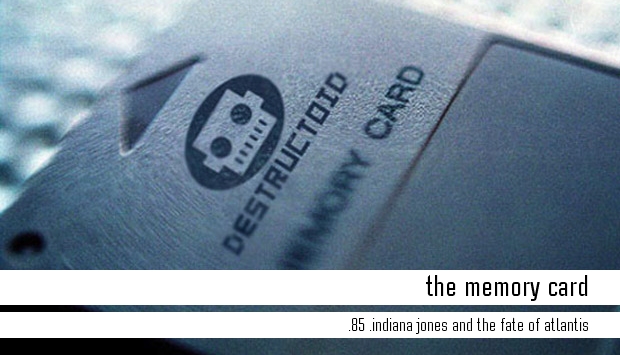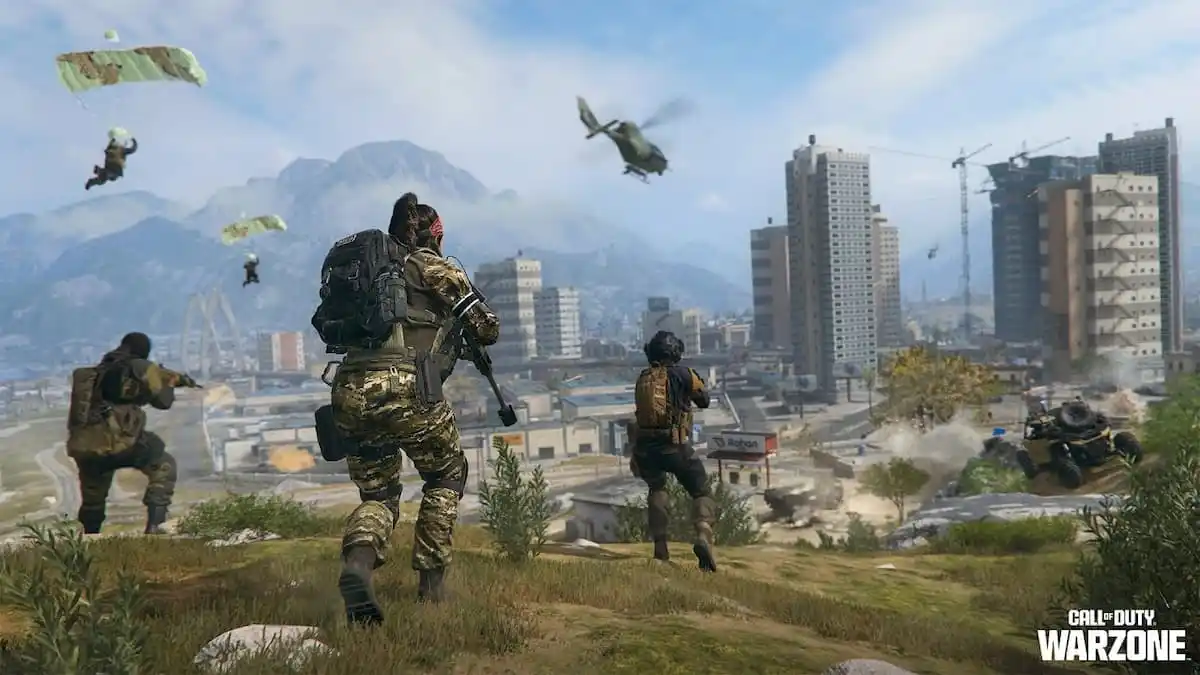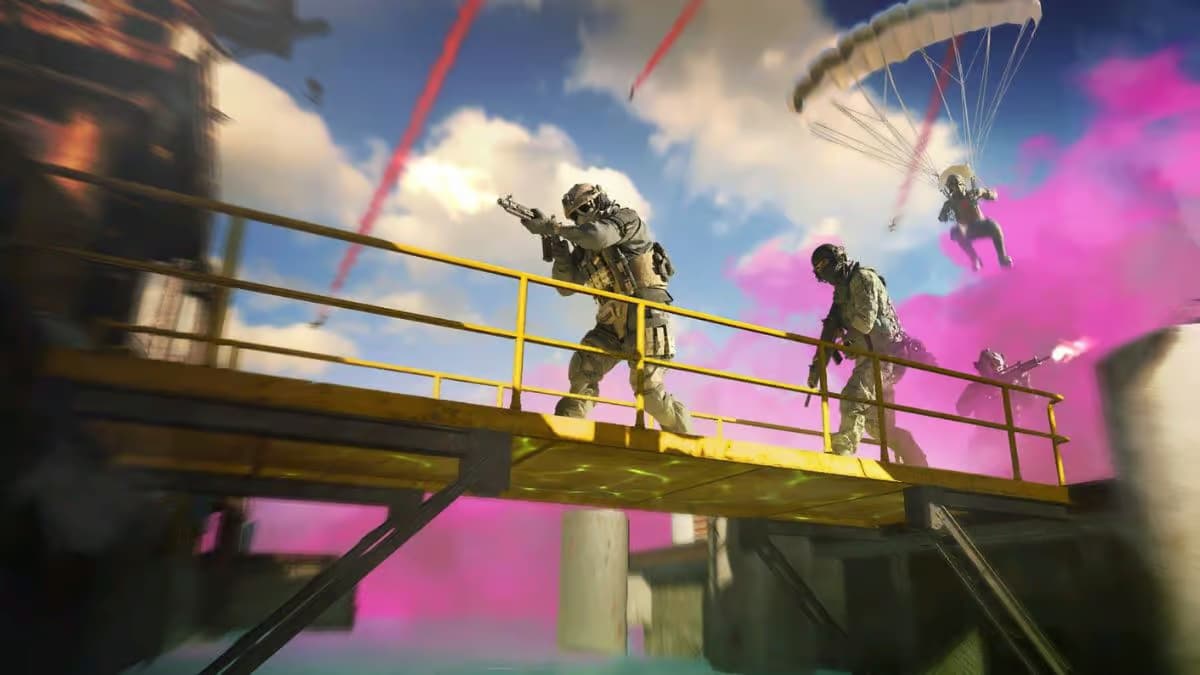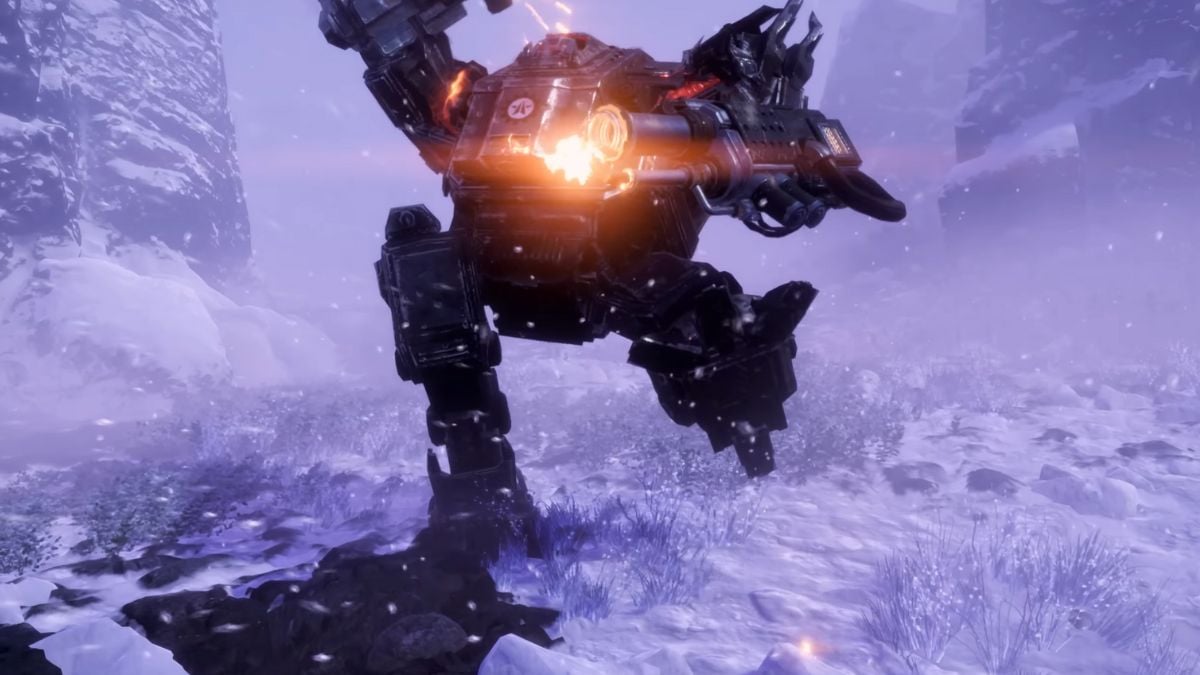There is a large focus on choice in the videogames of today.
In games like Infamous and Fallout, for example, players are tasked with choosing between a good or evil path. It is an interesting mechanic that, unfortunately, leads to mixed results.
Sure, choosing between two paths makes the game more interesting and varied, but aside from a sometimes striking visual transformation of the main character and some new mission goals, the game’s overall sequence of events pretty much stays the same.
Back in 1992, though, classic adventure game Indiana Jones and the Fate of Atlantis offered players an in-game choice that was truly revolutionary for the time. It was an innovative addition that dramatically changed the way the rest of the game played, and challenged players to view traditional videogame narrative in a whole new way.
The Set-Up
The late ‘80s and early ‘90s were easily the golden age of graphic adventure games. Between the glorious releases from Sierra and LucasArts alone, PC gamers everywhere were treated to a constant barrage of absolutely classic titles.
One of the most classic of these releases was LucasArts’ Indiana Jones and the Fate of Atlantis, an original adventure for the iconic archaeologist that was not only an exquisite adventure game, it could have easily been turned into a movie and felt like the perfect follow-up to Indy’s latest cinematic release (at the time), Indiana Jones and the Last Crusade.

In the game, you play as Indiana Jones, successful college professor and world-class adventurer.
After a brilliant opening sequence that finds Indiana Jones literally falling into clue after clue to locate a mysterious statue, Indy meets with a man named Mr. Smith on the campus of Barnett College.

Using a small key, Mr. Smith opens the statue and removes a small bead.
With no warning, Mr. Smith pulls a gun on Indy and steals both artifacts.
Learning his true identity is that of Third Reich agent Klaus Kerner, Indiana Jones begins his pursuit of the dangerous thief.

His tracking mission leads him to a woman named Sophia Hapgood, a former archaeologist turned psychic who is an expert on the lost city of Atlantis.

After her awkward/sexy meeting with Indiana, Sophia learns that her office has been ransacked by Kerner. You see, Kerner and the Third Reich are searching for ancient Atlantean artifacts, including a necklace worn by Sophia (one that luckily was not taken since it always lives around her neck).

Using her psychic powers and mystical connection to Atlantis, Sophia learns that a nasty Nazi scientist named Dr. Hans Ubermann is searching for the ruins of Atlantis to find an ancient power to use in warfare.
With Indy’s help, the two set off on a world-hopping journey to meet up with the Nazis and put a stop to their nefarious plan.

After traveling to many countries on many continents, Sophia and Indy eventually learn that the location of Atlantis can be found in a book in Barnett College, the same college Indy has taught at for years!
It is here in Barnett College when this week’s Memory Card moment occurs.
The Moment
At Barnett College, Indy separates from Sophia and heads into the university’s massive library to locate the book containing the information he is looking for.

After solving a series of puzzles using such seemingly random items as chewing gun and a lump of coal (I love adventure games!), Indiana finds the book he is searching for: “The Lost Dialogue of Plato”.
With the book in hand, Indiana Jones heads back to his office to meet up with Sophia.

There, the two look through the book, trying their hardest to decipher the secrets that lie within.
After flipping through some specially marked pages, Sophia and Indy find the information they need.

Atlantis, it seems, is not in the Atlantic Ocean as so many people had guessed. It is actually 300 miles off the coast of Greece in the Mediterranean. And to locate the legendary underwater city, three stone discs must be found.
Before having time to celebrate this newly acquired info, Sophia steps back. She announces that she has a psychic prediction for Indy.

She tells Indiana that she will not be able to go with him to Atlantis.
At this point, the game stops and three dialogue choices appear on-screen.

This doesn’t seem strange, since dialogue selections appear in all the conversations throughout the entirety of Fate of Atlantis.
But the choice the player makes at this point is of vast importance.
After revealing her psychic prediction is that she will not be accompanying Indy to Atlantis, these three specific choices in dialogue appear:
-You’re right, I better think this through alone.
-I’d rather tackle this together with you.
-I’d rather go into action by myself.
Depending on what you choose, the entire rest of the game completely changes.
By selecting the first choice, players are unknowingly choosing to take the Wits Path; the second choice leads to the Team Path; and the last selection becomes the Fists Path.
After making (and cleverly confirming) his choice, the game moves forward based on whatever path the player (and, in turn, Indy) chooses.

If Indy selects the Wits Path, he continues on his adventure all by himself, with the game putting a huge focus on difficult puzzles. If the Team Path is selected, Sophia accompanies Indy and the game uses both characters for its central gameplay (i.e. switching back and forth). And, finally, the Fists path puts a heavy focus on the game’s fighting mechanic (and less focus on puzzles), forcing Indy to get into many action-based fights as he makes his way to find the stone discs.
All three paths are completely different and entirely change the way the game is played.
Although the same overall locations are visited in all three paths, the things that happen along the way are entirely unique. New items and puzzles appear in all three paths; some characters will show up in one path, while not appearing in another; even some of the more detailed locations you visit are different.
With his next destination being Monte Carlo and Algiers, Indy (or Indy and Sophia!) heads off to these locations to find the stone discs.

Here, the effect of the choice he made back in Barnett College comes into play. Had he picked the Wits Path, Indy is faced with many complicated puzzles that most fans of adventure games would be familiar with (using and combining a wide variety of items to move forward, etc.).
If he chose the Team Path, both Indy and Sophia must tag team their way through many different scenarios to find the stones they are searching for.
With Fists, all of these puzzles and characters are tossed aside, as Indy engages in a (slightly lacking) fighting mechanic, turning the game into much more of an action title, rather than a point-and click adventure.
His choice playing out before him, Indy eventually finds all three stone discs and makes his way to the entrance to Atlantis.

It is here when all three paths converge, the story seamlessly continuing forward with the same events and puzzles regardless of the path that was selected earlier.
With the mysterious ruins of Atlantis before him, Indiana Jones sets forward to rescue Sophia and put a stop to the Nazis’ evil plan.
You can watch Indiana Jones make his fateful choice right here:
The Impact
Okay, I just have to get something out of my system really quick:
AHHHHHHHHHHHHHHHHH! I LOVE INDIANA JONES AND THE FATE OF ATLANTIS SO MUCH!
There. I feel so much better now.
But, seriously, the game is fantastic. There is a reason it is considered one of the best adventure games ever created. And this monumental choice halfway through the game is one of many reasons it is so outstanding.
First off, I love how the game changes depending on what choice you make. As mentioned at the beginning of this article, something like Infamous for the PlayStation 3 features choice throughout, but never really uses that promising mechanic to its full extent.
The good vs. evil choices in Infamous are interesting, but almost too obvious and predictable.
In Fate of Atlantis, the choice you make turns the game into three completely unique experiences. Each path offers new puzzles, new characters, and even some new locations. Yes, the paths converge before the end of the game, making your choice ultimately meaningless in the long run, but that is not why the moment is so memorable.
The moment works because it is so seamlessly incorporated into the story. In fact, it is so seamless and organic that you don’t even really know you are making a choice at all!
The first time I played Indiana Jones and the Fate of Atlantis I chose the Team Path. (What can I say? I loved Sophia as a character and didn’t want to part ways with her.) I didn’t really know I was choosing the Team Path, but the dialogue choice that most appealed to me as a player was “I’d rather tackle this together with you.” That’s what I wanted Indy to say.
The second time I played through the game, I selected “You’re right, I better think this through alone,” thereby embarking on the Wits Path, a much more challenging (and completely different!) branch in the game.
I had assumed that no matter what dialogue choice I made, all things would lead back to Sophia still coming with me to Monte Carlo and Algiers — that’s how things usually work in adventure games.
But, no. I chose to go alone and Indy went alone.
The game changed based on my decision.
As my adventure continued, the puzzles also had changed — which made sense, given the fact that the original puzzles had been designed around tag teaming between two characters the first time through.
I really wish more games embraced this style of “choose your own adventure” storytelling. And I really wish more games would completely change the overall gameplay depending on a moral choice you make halfway through, just like Fate of Atlantis so successfully accomplished.
Depending on your choice, the game becomes a tag team mission, a traditional adventure, or an action game. Three completely different play types doing three completely different things.
Brilliant.
Admittedly, there have been some games over the years that do a similarly great job with choice. The Mass Effect series in particular not only finds certain choices affecting a player’s entire game, those same choices lead far into the sequels as well. A rather impressive feat!
And Heavy Rain is also worth mentioning, with its numerous moments of branching paths and alternate storylines.
But it all started with Indiana Jones and the Fate of Atlantis. It’s been twenty years since the release of LucasArts’ class adventure game, and only a handful of titles have duplicated the choice mechanic in such a creative and unexpected way.
It is an absolutely incredible moment in one of my most beloved adventure games of all time.
![]()
The Memory Card Save Files
Season 1
.01: The return of Baby Metroid (Super Metroid)
.02: Palom and Porom’s noble sacrifice (Final Fantasy IV)
.03: The encounter with Psycho Mantis (Metal Gear Solid)
.04: The heir of Daventry (King’s Quest III: To Heir is Human)
.05: Pey’j is captured (Beyond Good & Evil)
.06: The Opera House (Final Fantasy VI)
.07: Attack of the zombie dog! (Resident Evil)
.08: A twist on a classic (Metroid: Zero Mission)
.09: A Christmas gift (Elite Beat Agents)
.10: To the moon, Mario! (Super Mario World 2: Yoshi’s Island)
.11: The Solitary Island (Final Fantasy VI)
.12: Wander’s brave friend (Shadow of the Colossus)
.13: The submerged letter (StarTropics)
.14: The legend of Tetra (The Legend of Zelda: The Wind Waker)
.15: Snake pulls the trigger (Metal Gear Solid 3: Snake Eater)
.16: Riding under the missiles (Contra III: The Alien Wars)
.17: Hover bike madness! (Battletoads)
.18: Syldra’s final cry (Final Fantasy V)
.19: Death by …grappling beam? (Super Metroid)
.20: The message in the glass (BioShock)
Season 2
.21: Crono’s final act (Chrono Trigger)
.22: Ganon’s tower (The Legend of Zelda: Ocarina of Time)
.23: It was all a dream? (Super Mario Bros. 2)
.24: The assimilation of Kerrigan (StarCraft)
.25: A McCloud family reunion (Star Fox 64)
.26: The return of Rydia (Final Fantasy IV)
.27: The battle with the Hydra (God of War)
.28: Fight for Marian’s love! (Double Dragon)
.29: The Hunter attacks (Half-Life 2: Episode 2)
.30: The Phantom Train (Final Fantasy VI)
.31: The end of The End (Metal Gear Solid 3: Snake Eater)
.32: In Tentacle We Trust (Day of the Tentacle)
.33: Peach dances with TEC (Paper Mario: The Thousand-Year Door)
.34: Learning to wall jump (Super Metroid)
.35: A leap of faith (Ico)
.36: The Master Sword (The Legend of Zelda: A Link to the Past)
.37: Thinking outside the DS (Hotel Dusk: Room 215)
.38: Running outside the castle (Super Mario 64)
.39: Del Lago! (Resident Evil 4)
.40: In memoriam (Lost Odyssey)
Season 3
.41: The tadpole prince (Super Mario RPG: Legend of the Seven Stars)
.42: Pyramid Head! (Silent Hill 2)
.43: Waiting for Shadow (Final Fantasy VI)
.44: Solid vs. Liquid (Metal Gear Solid 4: Guns of the Patriots)
.45: The birth of the cutscene (Ninja Gaiden)
.46: Insult swordfighting (The Secret of Monkey Island)
.47: A castle stuck in time (The Legend of Zelda: The Wind Waker)
.48: ‘That’s the magic flute!’ (The Wizard)
.49: Saving Santa (Secret of Mana)
.50: A shocking loss (Half-Life 2: Episode Two)
.51: The flying cow (Earthworm Jim)
.52: Blind the Thief (The Legend of Zelda: A Link to the Past)
.53: The nuclear blast (Call of Duty 4: Modern Warfare)
.54: Microwaving the hamster (Maniac Mansion)
.55: The fate of Lucca’s mother (Chrono Trigger)
.56: A fiery demise? (Portal)
.57: Jade’s moment of silence (Beyond Good & Evil)
.58: The Great Mighty Poo (Conker’s Bad Fur Day)
.59: With knowledge comes nudity (Leisure Suit Larry III)
.60: Flint’s rage (Mother 3)
Season 4
.61: The dream of the Wind Fish (The Legend of Zelda: Link’s Awakening)
.62: Leaving Midgar (Final Fantasy VII)
.63: Auf Wiedersehen! (Bionic Commando)
.64: Death and The Sorrow (Metal Gear Solid 3: Snake Eater)
.65: A glimpse into the future (Space Quest: The Sarien Encounter)
.66: Taloon the merchant (Dragon Quest IV)
.67: Scaling the waterfall (Contra)
.68: Anton’s love story (Professor Layton and the Diabolical Box)
.69: TKO! BJ! LOL! (Ring King)
.70: Giant robot fish! (Mega Man 2)
.71: The rotating room (Super Castlevania IV)
.72: The collapsing building (Uncharted 2: Among Thieves)
.73: Death by funnel (Phantasmagoria)
.74: Crono’s trial (Chrono Trigger)
.75: The blind fighting the blind (God of War II)
.76: Brotherly love (Mother 3)
.77: Prince Froggy (Super Mario World 2: Yoshi’s Island)
.78: The statue of a hero (Dragon Quest V: Hand of the Heavenly Bride)
.79: Inside the worm (Gears of War 2)
.80: The return to Shadow Moses (Metal Gear Solid 4: Guns of the Patriots)
Season 5
.81: A prayer for Ness (EarthBound)
.82: Yuna’s empty embrace (Final Fantasy X)
.83: Blast Processing! (Sonic the Hedgehog)
.84: A royal assist (The Legend of Zelda: The Wind Waker)




